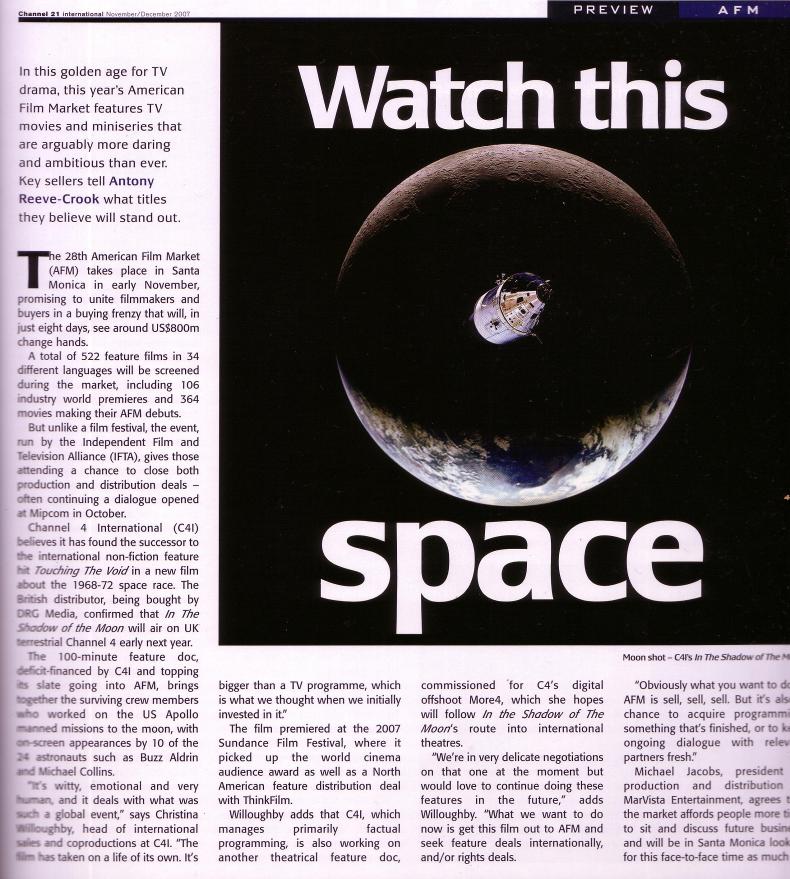Innovation has the power to transform organisations, teams and individual performance by revolutionising their product and/or service, and ultimately their relationship with their customers. In this article, IER examines the reasons for innovation within organisations
The epitaph on many a corporate tombstone can be summarised as a failure to innovate. Whether it’s Blockbuster’s refusal to migrate its video rental model online (Payne, 2021) as Netflix executives bet big on binary, or MySpace’s collapse (Angwin, 2009) under the might of Facebook’s improved user experience, an inability to embrace innovation can bring business to a standstill.
Innovation can be revelatory, transforming both an organisation and the landscape in which it operates, and it can also be disruptive; an impediment to perceived norms and strategy. Or in the words of Netflix co-founder Marc Randolph: “If you are unwilling to disrupt yourself, there will always be someone willing to disrupt your business for you … a lesson that Blockbuster learned too late.’” (Mollman, 2023).

Innovation has the ability to sink giants by permanently redefining the service or product an audience wants or – more accurately – thought they wanted. In the case of tech giant Apple, its intuitive interface saw its iPhone ‘pinch-zoom’ past the outdated, over-optioned product base presented by market leader Nokia, among the latter’s other failures to embrace technological innovation (Cord, 2014).
Continuous, iterative innovation eventually saw the iPhone evolve into a platform for consuming content, arguably changing the way we consume and retain information. To paraphrase Elon Musk during a podcast appearance in 2020, we are all cybernetic creatures now, the only obstacle is the interface: our primitive, clumsy, scrolling thumbs. Innovation saw the landscape in which Apple operated change beyond recognition. The iPhone launched in 2007 and just over a decade later Apple had expanded beyond technology, becoming a content provider alongside the likes of Netflix.
Another notable innovator, Amazon (which began life as an online bookstore) had made the equally unpredictable ascent into producing original content 2013, distributed through its Prime Video streaming service. As a result of innovation, a video rental service, a PC and mobile phone producer, and an online bookstore were now competing in the space previously occupied by television studios.
I am a journalist by trade, and in the publishing world, I witnessed first-hand the need for innovation as – like so many others – my industry sought to meet our audience where they expected to be engaged: online. However, migrating the traditional magazine publishing model online was easier said than done for an industry built on paper. Ad-blocking software adapted at pace and in-step with online media consumption, nullifying the predicted model of online publishing. In print an article would be accompanied by an advert, but ad-blocking software built into web browsers meant advertising could be hidden from the consumer entirely (Shiller, Waldfogel and Ryan, 2017).
Publishers had to innovate. Either they hid the articles behind a paywall, or they had to move to a paid-subscription model. Registrants’ data became the new currency; apps the new medium.
Today the impact of migrating business online is old news; the formation of open source framework Hadoop in 2007 saw to that. Its ability to process big data opened the door to machine learning and AI, the bete-noire of countless organisations and the disruptor of industries around the world – perhaps the greatest catalyst for widespread innovation the world has ever faced.
The types of innovation within organisations
Innovation can broadly be categorised as either Continuous and Discontinuous; iterative or radical in nature. While the former sustains an organisation’s competitive advantage through continuous adaptation, the latter has the capacity to arrive with the energy of a freight train; upending markets, closing doors and creating new industries overnight.
My earlier examples of Netflix and Apple showcase not just Digital innovation, but Social innovation. Both businesses were only effective because they opened a door that we as a society were already willing to walk through. Netflix’s streaming service came two years after the world was celebrating chocolate rain and cooing at kittens on Youtube. The audience was ready and waiting, and Netflix innovated accordingly.
In 2007 I was working for C21 Media, a business built on the promise of a premise. Its founder and CEO David Jenkinson realised that television entertainment trade shows were full of bored commissioning executives watching hour-upon-hour of programming instead of networking and engaging. It stood poised upon the technology required to gather and stream this programming in a single place; the C21 Screenings website, a business proposition dammed by data transfer rates. But when the levee broke; the business followed.

This is a good example of several types of innovation, both continuous and discontinuous. First and foremost it demonstrates service innovation in the way C21 Media improved accessibility and the delivery of the content to a willing audience. It was also highly disruptive: it reduced the value of television trade shows built around screenings and prompted them to update and improve their proposition to the same audience that C21 Media was engaging. It made use of digital transformation, (specifically sufficient data transfer rates), to innovate digitally, and in doing so enabled television executives to spend their time at trade shows more effectively.
C21 Media’s innovation could also be defined as social innovation. It invited the television community to gather around its website and discuss – perhaps even to ignite – new trends and tastes. It introduced process innovation in the way it streamlined operations, introducing agility and efficiency. If time is money, then the streamlining brought about by innovation is a high-interest savings account; reducing overall costs and accelerating consumer satisfaction.
When Uber managed to become the world’s largest automotive taxi service, without owning a single vehicle, (Issac, 2019), it demonstrated multiple instances of innovation. Technological in the use of telephony data to locate and track your taxi, disruptive, as seen by the numerous riots against the organisation by traditional taxi firms, process and service innovation in the way it altered customer expectations and the manner by which it changed the cab-hiring experience. However, it also brought about social innovation through accountability. That same phone that could identify and track your ride would be used to rate and tip your driver, reducing anxiety for – for example – younger women travelling alone.
Three factors that support a culture of innovation within organisations

Organisational Culture
Understanding the difference between innovation and invention is fundamental to an organisation’s ability to innovate. When an organisation wishes to invent, it employs groups of experts to create a product or introduce a process for the first time. But when that organisation innovates, it involves everyone to improve its products, services or experiences and in doing so creates solutions to genuine problems.
Or to put it another way: “Invention asks: what can we do differently, what can we change; how can we improve but more importantly, how do we implement; how do we get our ‘solution’ into the hands of those who need it?” (Beswick, Bishop and Geraghty, 2015).
And to do things differently is often to depart from standard operational procedure. This increases the chance of failure, and some organisational culture simply does not cultivate innovation simply by, typically, refusing to accept failure in their design and implementation at a C-suite level. But without allowing for failure, engaging in trial and error and allowing for the structured mitigation of internal conflict and creative difference, the scope for innovation can be limited (Tarkenton, 2015).

Processes and Structures
The act of innovating can rarely be decoupled from risk. Many of today’s entrepreneurs live by a phrase made popular by Facebook founder Mark Zuckerberg: ‘move fast and break things’. To an organisation seeking to disrupt, Zuckerberg’s words are a dog whistle. However, the risk of moving fast is that sometimes the things you break are the processes and schedules within your own organisation.
Take for example the limitations set in place by the involvement of shareholders. The UK drew US$1.8 trillion in private equity investments and almost another trillion in foreign direct investments over the past decade and a half (McKinsey, 2024), an influx that helped reshape the country’s corporate landscape. As a result, many businesses are accountable to a myriad stakeholders unwilling – or unable – to share their creative vision for fear of lowering the share price and subsequently, their own wealth as shareholders.
In one recent example, despite a record breaking year for UK energy derived from renewables, the oil giant BP confirmed it would scale back on its riskier renewable projects as it doubled down on efforts to produce oil and gas (Jack and Masud, 2025). As a publicly listed company, it is conceivable that the share price would take precedence over efforts in sustainable and social innovation. In this case continued innovation will still be taking place, but presumably in another form such as process or service innovation relating to BP’s core product offering: petrochemicals.

Talent and skills
Perhaps the innovators you require aren’t in the organisation to begin with. An organisation’s talent pool may not lend itself to the type, or types, of innovation required to maintain its competitive advantage if, for example, it has poorly identified its customer base and does not understand the challenge it faces.
The investor Warren Buffett made the point in a 1985 letter to shareholders at his company Berkshire Hathaway, that offers an alternative to the sentiment I earlier attributed to Mark Zuckerberg. “No matter how great the talent or efforts, some things just take time. You can’t produce a baby in one month by getting nine women pregnant,” (Buffett, 1985). Not all innovation, it seems, requires an organisation to move fast and break things. Sometimes innovation appears when the right people are in the right place at the right time.
By cultivating the right talent pool, replete with the constituents able you can foster a fertile environment in which innovation is enabled, at such a time as it becomes possible.
Article References
Alan Payne, Built to Fail: The Inside Story of Blockbuster’s Inevitable Bust, 2021
Ben Shiller, Joel Waldfogel and Johnny Ryan, 2017, Will Ad Blocking Break The Internet? The National Bureau of Economic Research (US)
Beswick, Bishop and Geraghty, 2015, Building a Culture of Innovation: A Practical Framework for Placing Innovation at the Core of Your Business Paperback
David J. Cord, The Decline and Fall of Nokia, 2014
Fran Tarkenton, The Power of Failure: Succeeding in the Age of Innovation Hardcover – Illustrated, 2015
Jack and Masud, 2025, ‘BP shuns renewables in return to oil and gas’, BBC Website
Julia Angwin, Built to Fail: The Inside Story of Blockbuster’s Inevitable Bust, 2009
Mike Isaac, 2019, Super Pumped: The Battle for Uber
Steve Mollman, 2023, ‘Blockbuster ‘laughed us out of the room,’ recalls Netflix cofounder on trying to sell company now worth over $150 billion for $50 million’, Fortune.


Leave a Reply